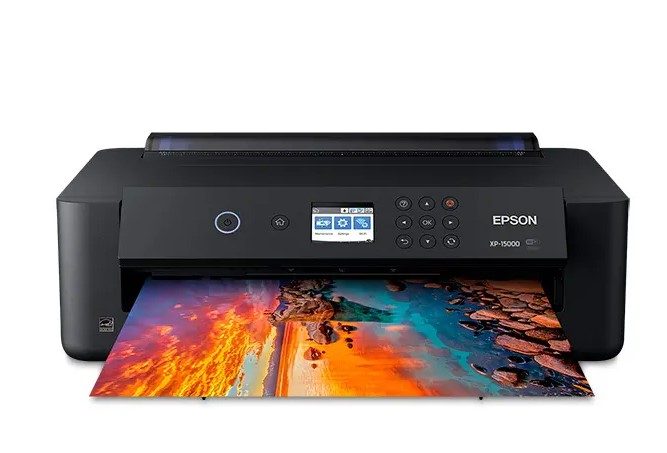Disclosure: As an Amazon Associate I earn from qualifying purchases.
Have you ever inhaled with an inhaler and been annoyed about the enormous volume of the device?
This does not have to be the case, however, because a quiet inhaler can help.
But which devices are particularly quiet? Well, that depends on the technology used.
Inhalers with vibrating membrane and ultrasonic technology are usually much quieter than compressor inhalers.
In this article you will find out why this is the case and what differences there are between these technologies.
Compressor inhalers are often very noisy
Probably the most commonly used inhalers are devices with compressor technology.
This technology works very well, offers a high nebulization rate, but has one major disadvantage.
Because compressor inhalers are often very noisy when in use.
Anyone who has ever inhaled with such a device knows how much noise can be generated when inhaling.
This is because the compressor has to constantly generate compressed air, which is then fed into the nebuliser via a hose.
Of course, there are differences in volume between the individual devices. Here you should pay attention to the manufacturer’s information on volume.
In terms of volume, however, compressor inhalers often range between 50 and 60 dB. Many people already find this to be quite loud.
Own measurements and experience with compressor inhalation devices
The compressor of my Pari Sinus inhaler, for example, has a volume of 67 dB. I measured this value myself with a mobile phone app at a distance of 10 cm.
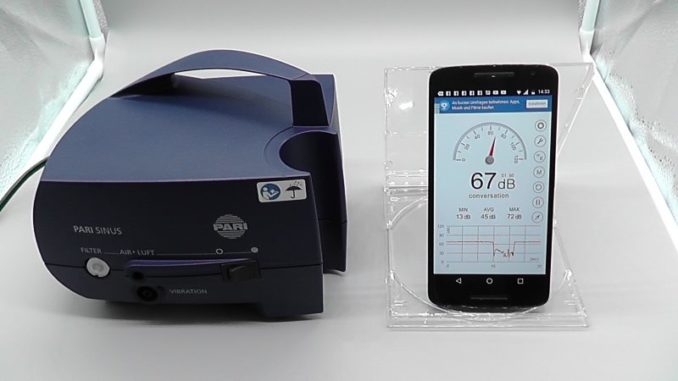
If I measure at a distance of 100 cm, however, I still get a volume of 57 dB. That too is still quite loud.
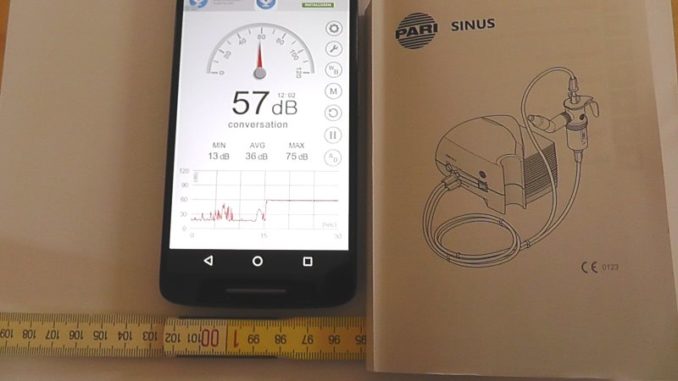
You can see the results of my measurement on the two pictures.
For these measurements I only took into account the volume of the compressor. Of course, the nebulizers also make a certain amount of noise.
These noises can also be uncomfortable because the nebulizer is close to your mouth and nose and therefore relatively close to your ears.
Listening to music or watching the sound of the TV while inhaling with this device is very tedious.
To do this, the sound would have to be turned up quite a bit in order to penetrate the noise of the inhaler.
I don’t even dare to inhale late at night with this device because I always think that the neighbors could be disturbed by this noise. Or maybe I’m just a little overcautious.
However, the volume of this device is not an isolated incident.
My Omron CompAir C28P compressor also makes a very similar noise.
With this device I get 68 dB at a distance of 10 cm, and 57 dB at a distance of 100 cm, as you can see in the two pictures.
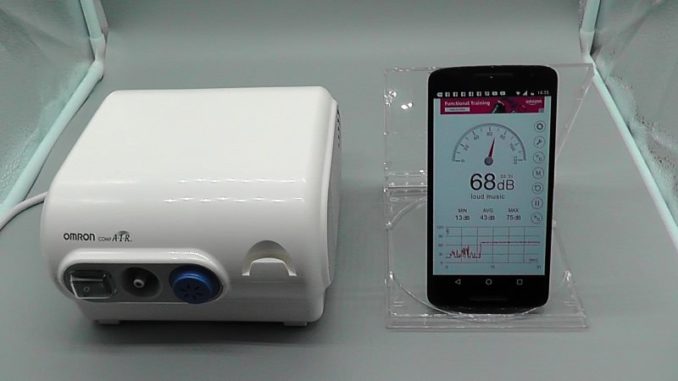
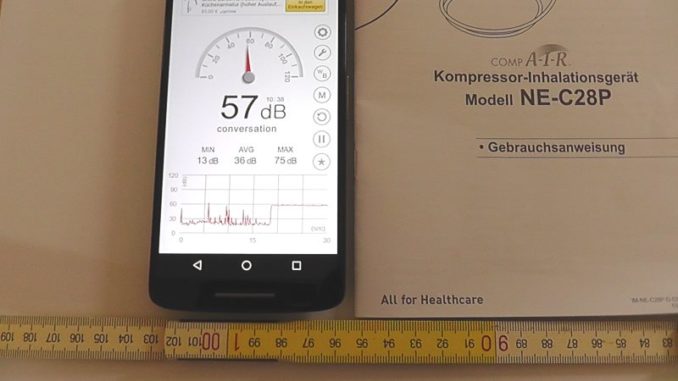
In principle, both devices are equally loud.
All in all, I am very satisfied with the performance of these devices, but due to the high volume I have less and less desire to use these inhalers.
That sounds a bit stupid, but it’s true. Because rest is generally very important to me.
That’s why I’m always looking for quiet devices, such as quiet projectors or a quiet dishwasher , and try to avoid as much noise as possible.
Depending on the device, this works sometimes better and sometimes less well.
Quiet inhalers with vibrating membrane technology
Inhalers with vibrating membrane technology are much quieter.
With this technology, a vibrating membrane is used to nebulize the inhalation solution, which is permeable to the smallest parts of the inhalant as soon as it is vibrated.
A loud compressor is not used here.
Such devices are not only quiet, but also handy and can usually also be operated with batteries. This makes these inhalers ideal for on the go.
The advantages of inhalers with vibrating membrane technology are summarized:
- Quiet in operation
- Small and handy
- Usually battery operation possible
- Well suited for on the go
Popular quiet inhalers with vibrating membrane technology include the Beurer IH 55 inhaler * and the Omron MicroAir U100 inhaler * .
Quiet inhalers with ultrasonic technology
Inhalers with ultrasound technology also usually work quite quietly.
With this technology, electrical energy is converted into high-frequency vibrations, which then atomize the inhalation solution.
No compressor is used here either.
An example of such a device is the Laica MD6026 ultrasonic inhaler * , which the manufacturer describes as low-noise with 45 dBA.
The Medisana IN 525 * is also an ultrasonic nebulizer.
Conclusion
If you are primarily looking for a quiet inhaler, you should first look around in the category of inhalers with vibrating membrane and ultrasonic technology.
If devices in this category meet your own requirements and demands, then the search for a quiet inhaler is over.
If not, the significantly higher volume of a compressor inhaler must be accepted.
Perhaps you can make inhaling a little more comfortable with such a device by wearing earplugs or even using noise canceling headphones .
Fortunately, today we have a number of products available that help us to relax.
Disclosure: Amazon and the Amazon logo are trademarks of Amazon.com, Inc, or its affiliates.



